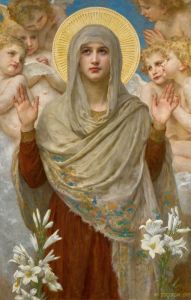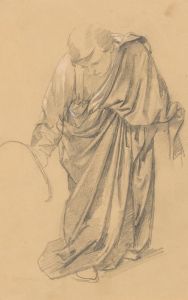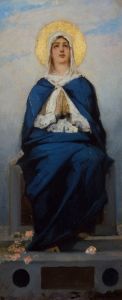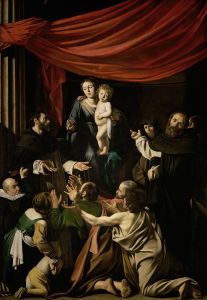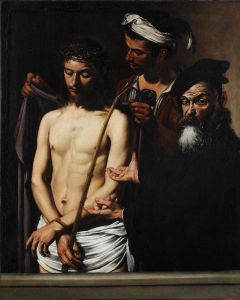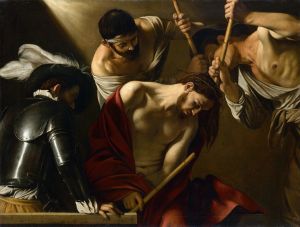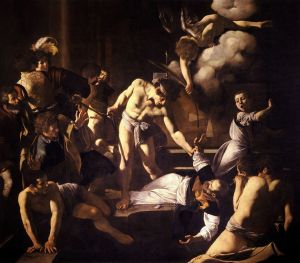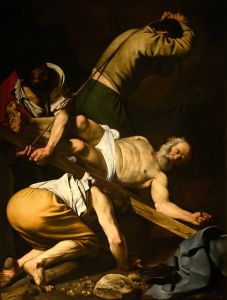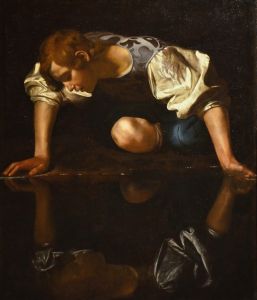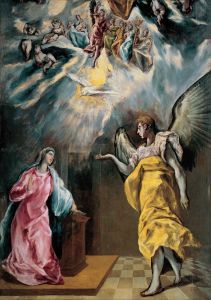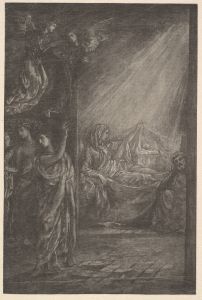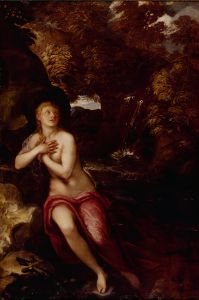
Martha and Mary Magdalene
A hand-painted replica of Caravaggio’s masterpiece Martha and Mary Magdalene, meticulously crafted by professional artists to capture the true essence of the original. Each piece is created with museum-quality canvas and rare mineral pigments, carefully painted by experienced artists with delicate brushstrokes and rich, layered colors to perfectly recreate the texture of the original artwork. Unlike machine-printed reproductions, this hand-painted version brings the painting to life, infused with the artist’s emotions and skill in every stroke. Whether for personal collection or home decoration, it instantly elevates the artistic atmosphere of any space.
Martha and Mary Magdalene is a painting by the renowned Italian Baroque artist Caravaggio, created around 1598. This work is notable for its intimate portrayal of two biblical figures, Martha and Mary Magdalene, and is housed in the Detroit Institute of Arts. Caravaggio, known for his dramatic use of chiaroscuro and realistic depiction of human figures, brings these qualities to the forefront in this painting.
The painting depicts a moment of contemplation and conversion. Martha, traditionally seen as the more practical and active sister, is shown engaging with Mary Magdalene, who is often associated with repentance and devotion. In the composition, Martha is gesturing with her hands, seemingly in the midst of a conversation, while Mary Magdalene appears to be listening intently, her expression thoughtful and reflective. This interaction suggests a narrative of spiritual awakening and transformation, themes commonly explored in religious art of the period.
Caravaggio's use of light and shadow is particularly effective in this work, highlighting the emotional intensity of the scene. The light source, coming from the left, illuminates the faces and hands of the two women, drawing the viewer's attention to their expressions and the dynamic between them. The background is kept in shadow, a technique that not only adds depth to the composition but also focuses the viewer's attention on the figures themselves.
The painting is also notable for its realistic portrayal of the two women. Caravaggio was known for using real-life models for his works, and this painting is no exception. The figures are depicted with a naturalism that was groundbreaking at the time, moving away from the idealized forms that were common in earlier Renaissance art. This approach allows the viewer to connect with the figures on a more personal level, emphasizing their humanity and the universality of their experience.
Martha and Mary Magdalene is a testament to Caravaggio's skill in capturing the complexity of human emotion and interaction. The painting not only reflects the artist's mastery of technique but also his ability to convey profound spiritual and psychological themes. It remains a significant example of Caravaggio's contribution to the Baroque movement and his influence on the development of Western art.
The painting's provenance includes its acquisition by the Detroit Institute of Arts, where it continues to be a subject of study and admiration. As with many of Caravaggio's works, it has been the focus of scholarly research, exploring its historical context, artistic techniques, and thematic content. This painting, like much of Caravaggio's oeuvre, continues to captivate audiences with its powerful depiction of a moment of spiritual introspection and its innovative use of light and realism.





